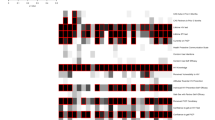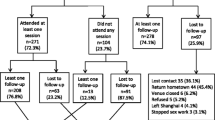Abstract
Despite extensive early prevention efforts, recent surveys suggest that sexual risk taking may again be on the rise in Thailand. The present cross-sectional study surveyed 3,299 recruits in the Thai Navy in 2010, to examine their rates and correlates of consistent condom use. Most participants were aged 21–22 years, unmarried, and had a secondary education. Almost half were employed in labor/agriculture. Only 17 % of sexually experienced recruits were consistent condom users, and 53 % reported multiple sex partners in the past 3 months. In multiple logistic regression, residence in the Northeast (AOR 1.47), age (AOR 1.43), being single (AOR 2.13), non-MSM status (AOR 1.41), voluntary testing (AOR 1.24), and condom use at first sex (AOR 4.29) were significantly associated with consistent condom use. These findings suggest gaps in Thailand’s condom campaign targeting both sexually experienced and inexperienced youth. Interventions targeting naval recruits may benefit from including sex education in the training curriculum, building drillmasters’ capacities to facilitate sex education/counseling, and creating a supportive environment with better access to condoms.

Similar content being viewed by others
References
Viravaidya M, Obremskey SA, Meyers C. The economic impact of AIDS on Thailand. In: Bloom DE, Lyons JV, editors. Economic implications of AIDS in Asia. New Delhi: United Nations Development Programme; 1993.
World Health Organization. Experiences of 100 % condom use programme in selected countries of Asia. Manila: WHO, Regional Office for the Western Pacific; 2004.
UNAIDS. Evaluation of the 100 % condom programme in Thailand. Geneva: UNAIDS; 2000.
UNAIDS. Report on the global AIDS epidemic. Geneva: UNAIDS; 2006. p. 2006.
Danyuttapolchai J, Poolkaysorn S, Tangrua W, Plipat T. HIV sero-surveillance, Thailand 2006 (round 24). Thai AIDS J. 2007;19(3):125–40.
Bureau of Epidemiology. HIV sero sentinel surveillance report, 2010. Nonthaburi: Department of Disease Control, Ministry of Public Health; 2010.
National AIDS Prevention and Alleviation Committee. UNGASS country progress report 2010: Thailand reporting period January 2008–December 2009. Nonthaburi: Ministry of Public Health; 2010.
Van Griensven F, Varangrat A, Wimonsate W, et al. Trends in HIV prevalence, estimated HIV incidence, and risk behavior among men who have sex with men in Bangkok, Thailand, 2003–2007. J Acquir Immune Defic Syndr. 2010;53:234–9.
van Griensven F, Thanprasertsuk S, Jommaroeng R, et al. Evidence of a previously undocumented epidemic of HIV infection among men who have sex with men in Bangkok, Thailand. AIDS. 2005;19(5):521–6.
National Statistics Office of Thailand (TNSO). Preliminary report: the 2010 population and housing census (whole Kingdom). Bangkok: TNSO; 2011. http://popcensus.nso.go.th/upload/popcensus-08-08-55-E.pdf. Accessed 21 Jul 2012.
UNAIDS. Thailand AIDS response progress report 2012, reporting period: 2010–2011. http://www.unaids.org/en/dataanalysis/knowyourresponse/countryprogressreports/2012countries/ce_TH_Narrative_Report%5B1%5D.pdf. Accessed 5 Feb 2013.
Bureau of Epidemiology, Thailand. Behavioural surveillance survey report 2008. Nonthaburi: Department of Disease Control, Ministry of Public Health, 2008.
Teerawattananon Y, Bundhamcharoen K. The burden of HIV/AIDS in Thailand. Poster session presented at: the XIV international AIDS conference. 18–23 Jul 2010, Vienna, Austria.
Ministry of Defense. Information about military recruits. http://www.mod.go.th/misc/officer1.htm. Accessed 11 May 2012.
Thomson N, Sutcliffe CG, Sirirojn B, et al. Penile modification in young Thai men: risk environments, procedures and widespread implications for HIV and sexually transmitted infections. Sex Transm Infect. 2008;84(3):195–7.
UNAIDS. Monitoring the declaration of commitment on HIV/AIDS: guidelines on construction of core indicators: 2010 reporting. Geneva: UNAIDS; 2009.
Jenkins RA, Manopaiboon C, Samuel AP, et al. Condom use among vocational school students in Chiang Rai, Thailand. AIDS Educ Prev. 2002;14(3):228–45.
Celentano DD, Bond KC, Lyles CM, et al. Preventive intervention to reduce sexually transmitted infections: a field trial in the Royal Thai army. Arch Intern Med. 2000;160(4):535–40.
Ocha W. Transsexual emergence: gender variant identities in Thailand. Cult Health Sex. 2012;14(5):563–75.
Winter S. Thai transgenders in focus: their beliefs about attitudes towards and origins of transgender. Int J Transgenderism. 2006;9(2):47–62.
Acknowledgments
This study and authors NY and JM received support through the University of California San Francisco from the following Grants from the U.S. National Institutes of Health (NIH): Fogarty International Center (FIC) D43TW005799, National Institute for Mental Health (NIMH) Center for AIDS Prevention Studies P30 MH062246, NIMH International Traineeships in AIDS Prevention Studies R25MH064712, and the Starr Foundation Scholarship Fund. Authors EH and MLE received support from NIMH Grant 1R01MH095659-01. NY was further supported by the Department of Health Communication at Hua Chiew Chalermprakiet University, Samut Prakan, Thailand. The content is solely the responsibility of the authors and does not necessarily represent the official views of NIH, NIMH, the Starr Foundation, or Hua Chiew Chalermprakiet University. We also want to acknowledge the contributions of several people without whom this study could never have been conducted. First and foremost is Captain (RTN) Noppadol Supakorn, Commander of the Naval Training Center, who provided vehement support to this study. We also wish to thank Captain (RTN) Sommai Kijchalao; Commander (RTN) Ngern Puangnak at the Division of Preventive Medicine, Naval Medical Department of the Royal Thai Navy; and Commander (RTN) Danai Nungsue and the drillmasters at the Naval Training Center for their support throughout the entire study period. Moreover, we thank the International Traineeships in AIDS Prevention Studies at UCSF, and in particular Willi McFarland, for support and guidance in developing this manuscript. Last but not least, we wish to thank all of the 3,299 naval recruits for providing us with very useful information about perceptions and sex behaviors among this cross-section of young Thai males.
Author information
Authors and Affiliations
Corresponding author
Rights and permissions
About this article
Cite this article
Yuntadilok, N., Timmuang, R., Timsard, S. et al. Eroding Gains in Safe Sex Behavior, HIV/AIDS Knowledge, and Risk Perceptions Among Royal Thai Navy Conscripts After 28 Years of the AIDS Epidemic in Thailand. AIDS Behav 18 (Suppl 1), 42–49 (2014). https://doi.org/10.1007/s10461-013-0522-0
Published:
Issue Date:
DOI: https://doi.org/10.1007/s10461-013-0522-0




